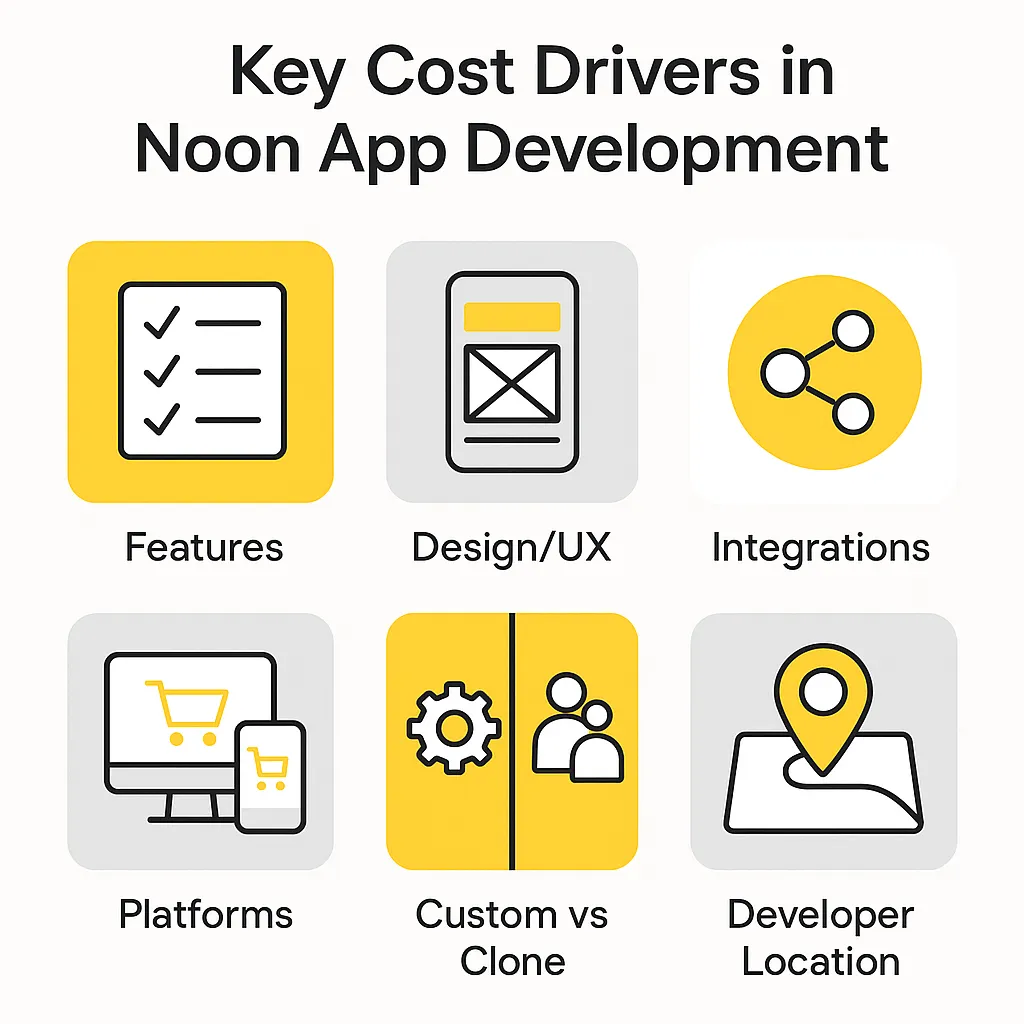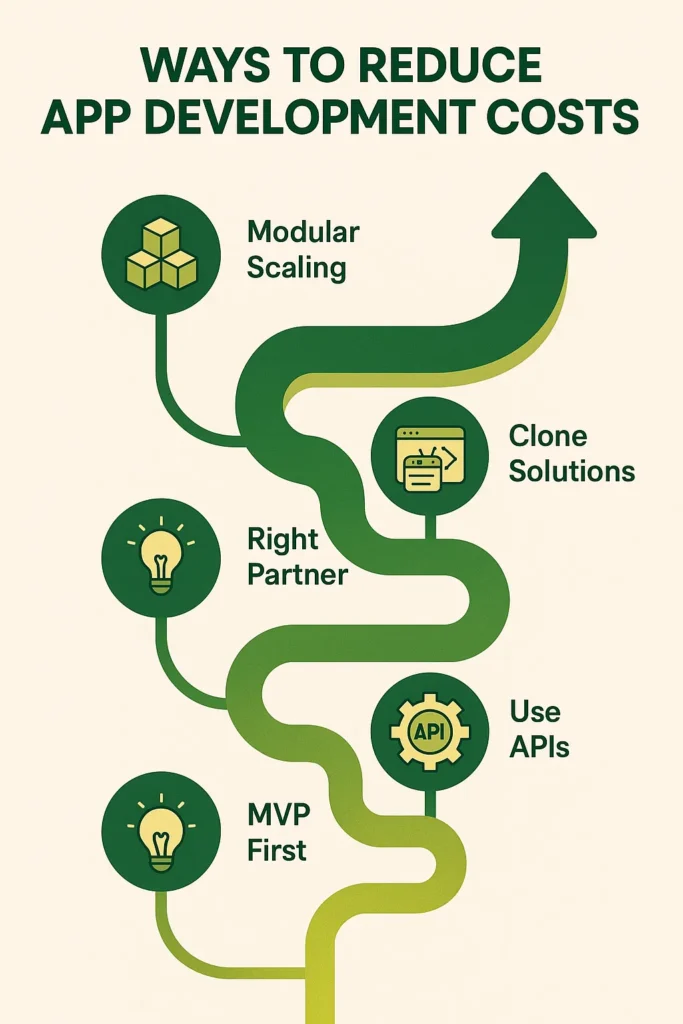Noon App Development Cost in 2025 | Complete Guide
Create a powerful, customizable streaming solution with Miracuves’ Noon, equipped with high-performance features and next-gen technology.
Ecommerce is one of the fastest-growing sectors, and Noon has emerged as a strong player in the Middle East. If you’re an entrepreneur aiming to launch your own ecommerce marketplace, the first question you’ll face is: What’s the real cost to build a Noon-like app?
A Noon-style app is more than just a shopping platform. It’s a complete ecosystem that covers product listings, secure payments, logistics, seller dashboards, promotions, and customer support. Building such a platform requires careful planning, reliable technology, and the right investment strategy.
Understanding the Noon app development cost helps you budget effectively, prioritize features, and launch with confidence. This guide breaks down the main cost factors, regional price differences, complexity tiers, hidden expenses, and strategies to optimize your spend.

Key Factors That Influence Noon App Development Cost
There’s no one-size-fits-all pricing for an ecommerce platform like Noon. Your total spend depends on several factors:
App Features & Complexity → From simple shopping carts to AI-driven recommendations, the feature set directly affects cost.
Design & User Experience → Ecommerce thrives on smooth navigation and clean UI. The better the design, the more development effort required.
Third-Party Integrations → Payment gateways, logistics APIs, inventory management, and CRM integrations add cost.
Platform Scope (iOS, Android, Web) → Supporting multiple platforms increases development hours.
Customization vs Clone Solutions → Clone scripts reduce upfront investment but offer less flexibility than full custom builds.
Backend & Scalability → Noon-style apps need a scalable backend to handle peak loads and regional expansion.
Development Team Location → Hourly rates differ across geographies, often making offshore development cost-efficient.
Noon App Cost Estimates by Type
To help you visualize the investment, here’s a tiered cost breakdown:
This range includes design, development, QA testing, and basic post-launch support — but excludes infrastructure, compliance, and marketing.
|
App Type
|
Estimated Cost Range (USD)
|
Description
|
|---|---|---|
|
MVP (Minimum Viable Product)
|
$15,000 – $30,000
|
Essential features like product catalog, user registration, cart, checkout, and admin panel.
|
|
Standard Version
|
$30,000 – $70,000
|
Adds search filters, product sorting, seller modules, promotions, multi-currency support.
|
|
Full-Featured App
|
$70,000 – $150,000+
|
Includes AI-based recommendations, real-time inventory, delivery tracking, CRM tools, and advanced analytics.
|
Note: These are development-only estimates. Logistics, marketing, and operations should be budgeted separately.
Region-Wise Development Cost Comparison : Noon
Development costs vary widely depending on where your team is located. Here’s a breakdown:
|
Region
|
Hourly Rate (USD)
|
Typical Cost for Standard App
|
|---|---|---|
|
North America
|
$100 – $200/hr
|
$100,000 – $200,000+
|
|
Western Europe
|
$80 – $150/hr
|
$80,000 – $160,000+
|
|
Eastern Europe
|
$40 – $80/hr
|
$40,000 – $90,000+
|
|
India & Southeast Asia
|
$20 – $50/hr
|
$20,000 – $60,000+
|
Takeaway: Offshore development in India or Eastern Europe can cut costs by 40–60% while maintaining quality, especially if you choose an ecommerce-focused team.
Cost Breakdown by Development Stage : Noon Clone
To avoid budget surprises, it’s crucial to understand how your total development cost is distributed across different stages of the Noon clone project. Each phase plays a key role in delivering a reliable, scalable, and user-friendly eCommerce app.
Here’s a typical cost allocation breakdown:
|
Development Stage
|
Estimated % of Total Cost
|
Includes
|
|---|---|---|
|
Discovery & Planning
|
5–10%
|
Market research, competitor analysis, defining user personas, feature scoping, technical requirements.
|
|
UI/UX Design
|
10–15%
|
Wireframing, prototyping, responsive design, visual branding, user experience mapping.
|
|
Frontend & Backend Dev
|
40–50%
|
Core feature development, database architecture, APIs, payment integrations, dashboard and logic build.
|
|
Testing & QA
|
10–15%
|
Manual and automated testing, bug fixing, device/browser compatibility checks, performance tuning.
|
|
Deployment & Launch
|
5–10%
|
App store submission (Android/iOS), server setup, production deployment, performance monitoring tools.
|
|
Maintenance & Updates
|
10–20%
|
Post-launch bug fixes, new features, server maintenance, user support, compliance updates.
|

How to Reduce Noon App Development Costs (Without Compromising Quality)
Smart planning can help you optimize budget without cutting critical features:
Start with an MVP → Launch with essentials first, then expand.
Choose the right development partner → Ecommerce experience matters for speed and quality.
Use clone/white-label solutions → Accelerates launch and reduces cost.
Leverage pre-built APIs → Saves time on payment, logistics, and analytics integration.
Adopt modular scaling → Add features like loyalty programs or AI gradually.
This phased approach helps you manage investment while ensuring sustainable growth.
Choose the Right Development Partner
Even with a clear roadmap, building a Noon-like app is a big undertaking. The right development partner can make all the difference.
Look for a team with:
Proven ecommerce development expertise
A portfolio of successful marketplace apps
End-to-end services from UI/UX to post-launch support
Strong API and integration capabilities
At Miracuves, we specialize in clone solutions tailored for startups and enterprises. Our Noon clone development helps you launch faster, scale confidently, and focus on growing your marketplace while we handle the tech.
Conclusion
The cost to develop a Noon-like ecommerce app in 2025 depends on your goals, features, region, and development approach. From MVPs starting at $40,000 to enterprise platforms exceeding $300,000, the range is wide — but with the right planning and partner, you can build a scalable, profitable marketplace without draining your resources.
Ready to turn your ecommerce vision into reality?
Contact Miracuves today for a customized estimate and development roadmap.
Frequently Asked Questions
The development cost can range from $15,000 to $150,000+ depending on features, tech stack, platforms, and developer location. An MVP with core features may cost around $20,000–$30,000, while a full-featured, scalable solution can exceed $100,000.
For an MVP, include essentials like:
User registration/login
Product catalog & search
Shopping cart & checkout
Order tracking
Basic admin panel
Absolutely. A white-label solution can save 50–70% of your development cost and drastically reduce time-to-market. You’ll still be able to customize branding, features, and user flows.
MVP: 4–8 weeks
Standard version: 10–16 weeks
Full-featured platform: 4–6 months or more
Timelines may vary based on features, revisions, and your team’s availability for feedback.
Yes — if you choose the right partner. Many startups work with offshore teams (e.g., in India or Eastern Europe) to access skilled talent at lower rates. Just make sure to:
Review portfolios and references
Sign NDAs and contracts
Use project management tools for visibility



